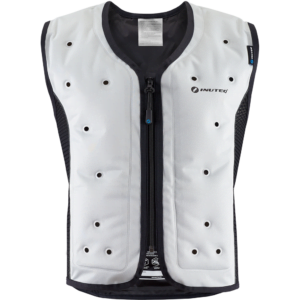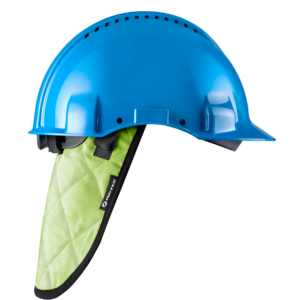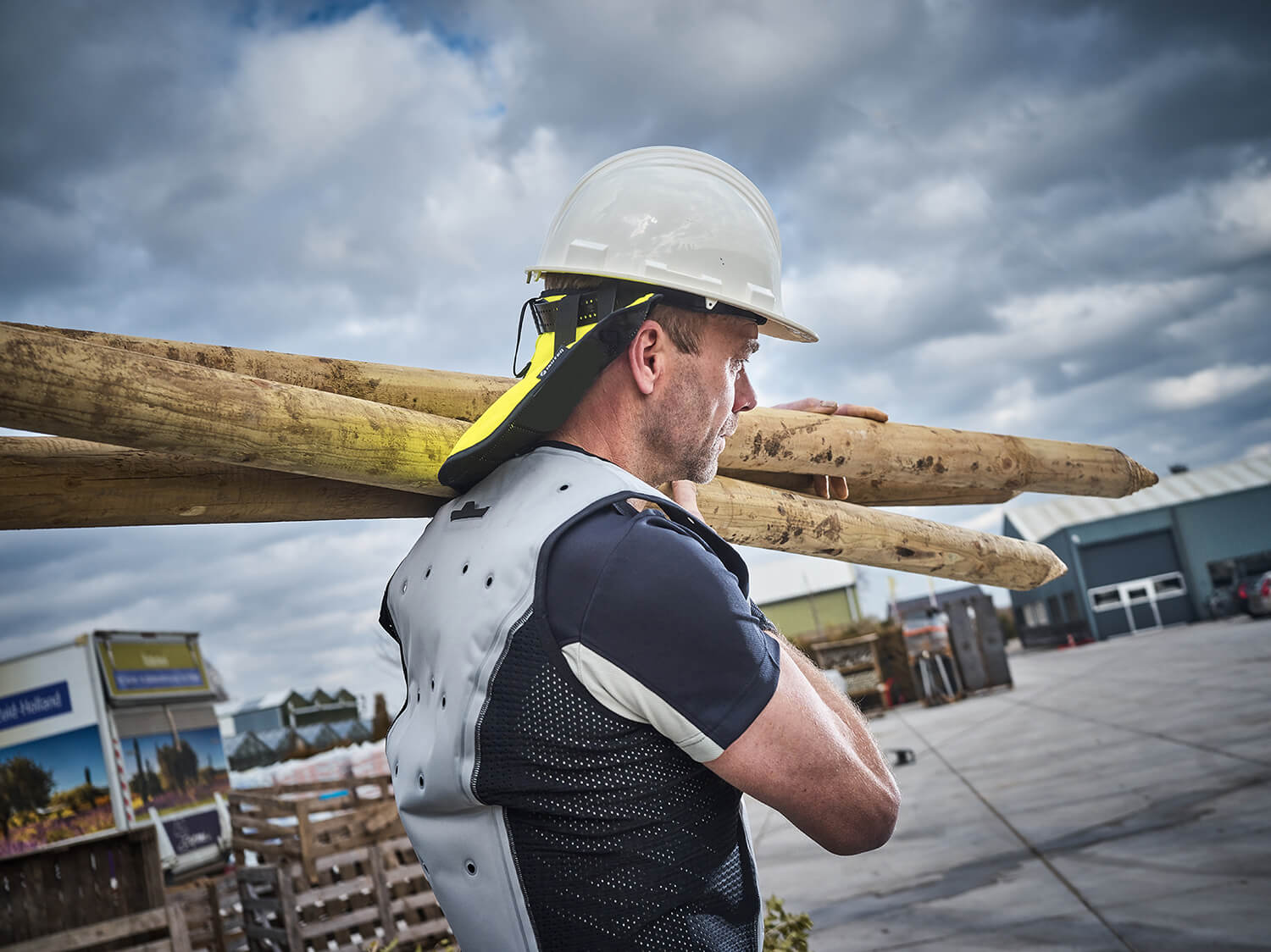Working in the heat can be a challenging and risky situation. Heat stress, also known as heat stress, occurs when our bodies cannot cool down sufficiently due to excessive heat stress and strenuous physical exertion. It can lead to serious health problems and compromise workplace safety and productivity.
At Wijngaarden VeiligGoed, we understand the risks that heat stress entails and we are committed to the protecting workers in such conditions. Our PPE advisers are fully aware of the current guidelines and standards for working in heat. They have the expertise to recommend the right PPE that can help workers protect themselves from the dangers of heat stress.
In our blog article, we share valuable insights on exactly what heat stress is and the risks it poses in the workplace.

Know the risks of working in the heat
Heat stress in the workplace poses several risks. Here are the main risks workers may experience:
1. Heat-related diseases
Prolonged exposure to high temperatures and physical exertion can lead to heat-related illnesses, such as heat exhaustion, heat cramps and in serious cases, heat stroke. These conditions can lead to fainting, confusion, muscle cramps, nausea, dizziness and, in extreme cases, even coma or death.
2. Reduced cognitive function
Heat stress can lead to impaired cognitive function, including problems with concentration, memory loss, reduced alertness and indecision. This can negatively affect employee performance and productivity, which in turn can lead to errors and accidents in the workplace.
3. Increased risk of accidents
When workers are exposed to high temperatures and heat stress, the risk of accidents increases. Impaired cognitive function and physical weakness due to heat can lead to impaired coordination, delayed reaction times and reduced motor skills, which increases the risk of falls, trips and other accidents.
4. Dehydration
Working in the heat can lead to excessive sweating and dehydration. A lack of hydration can lead to fatigue, reduced performance, headaches, dizziness and in serious cases up to fainting. Dehydration can also affect kidney function and lead to serious health problems.
5. Exacerbation of existing health problems
Heat stress can exacerbate existing health problems, such as heart and lung diseases. The strain on the body from the heat can lead to excessive stress on the heart and lungs, worsening workers' health conditions.
6. Psychological strain
Besides the physical risks, heat stress can also be a psychological burden. Workers may anxiety, stress and discomfort experienced due to the extreme heat, which can affect overall job satisfaction and well-being.
Understanding and recognising these risks is essential to take appropriate measures to protect workers from the dangers of heat stress in the workplace.

What legislation applies to employers regarding heat stress?
Employers have a responsibility to ensure the health and safety of their employees, including working in hot environments. Here are some legal requirements and guidelines.
Disclaimer: Our PPE advisers are familiar with the current guidelines that apply in 2023. Below, we share some examples of possible guidelines to be considered in your industry.
Risk assessment
Employers should conduct a thorough risk assessment to identify potential risks related to heat in the workplace. This includes assessing environmental, work and individual factors that may increase the risk of heat stress.
Preventive measures
Based on the risk assessment, employers should take appropriate preventive measures to protect workers from heat stress. This can include implementing technical and organisational measures such as providing shaded workplaces, good ventilation, regular breaks, and limiting physical exertion during the hottest hours of the day.
Information and training
Employers should educate and train workers on the risks of heat stress and the measures they can take to protect themselves. This includes making workers aware of the symptoms of heat stress, the importance of hydration and the proper use of personal protective equipment if needed.
Personal protective equipment (PPE)
If the risk assessment shows that PPE needed, employers should provide suitable PPE to workers. This could include cooling vests, sun hats, safety glasses and protective clothing.
It is important to note that specific legal requirements and guidelines may vary by country and industry. Employers should therefore familiarize themselves with the specific laws and regulations applicable to their location and industry, and seek expert advice if necessary to comply with the applicable standards for heat in the workplace.
What types of protective clothing and personal protective equipment (PPE) are most suitable for working in hot environments?
When working in hot environments, there are several types of protective clothing and personal protective equipment (PPE) that can help workers protect themselves from heat stress. Here are some commonly used PPE options:
Cooling vests
Cooling vests are specially designed to keep workers cool in hot conditions. These vests incorporate cooling technologies that absorb and evaporate heat, keeping the body at a more comfortable temperature. Employers can visit Cooling vests.nu, where professional cooling vests of the Inuteq brand are available.
>> Order professional cooling vests here

Protective clothing with ventilation
Protective clothing can be designed with integrated vents to promote airflow and keep the body cooler. This can help reduce heat build-up under the clothing and improve comfort for workers.
Breathable clothing
Clothing made of breathable materials, such as cotton or technical fabrics with moisture management properties, can help absorb sweat and evaporate faster. This keeps skin cooler and drier, reducing the risk of heat stress.
Head protection
Sun hats or caps with neck flaps can protect workers from direct sunlight and help regulate body temperature by providing shade to the head and neck.

>> View Neck flap H2O for helmet
Sunglasses
Sunglasses with UV protection help protect the eyes from harmful radiation and reduce the burden of bright sunlight on the eyes, which can contribute to workers' comfort in hot conditions.
It is important for employers to choose the right PPE based on the specific needs and risks of their working environment. For high-quality cooling vests and other cooling technologies, employers can turn to Koelvesten.nu, where professional cooling vests from the Inuteq brand are available. These vests provide effective cooling and comfort while working in hot conditions.
>> Shop professional cooling PPE here

Keep your cool and enlist the help of a PPE advisor
When working in hot environments, it is crucial to seek professional advice to properly assess the work situation and select the right personal protective equipment (PPE). At Wijngaarden VeiligGoed, we understand the complexity of ensuring the health and safety of workers in such conditions.
Our expert PPE advisers are fully aware of the latest legislation and guidelines relating to working in heat. They are ready to support employers in making informed decisions and selecting the right PPE for their working environment. Get in touch with Wijngaarden VeiligGoed for professional advice and make sure your workers are properly protected, according to the latest legislation and standards for working in heat.




